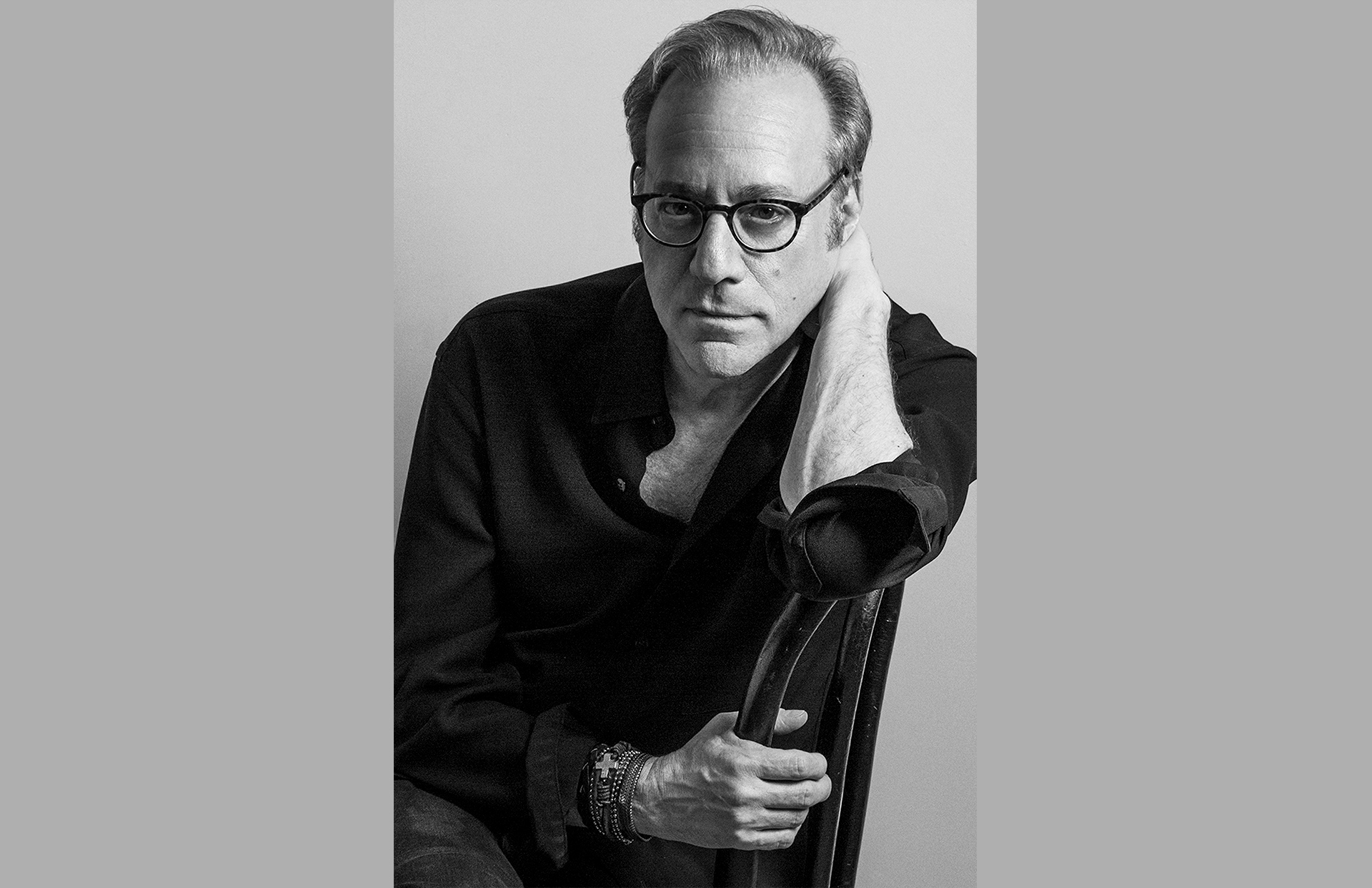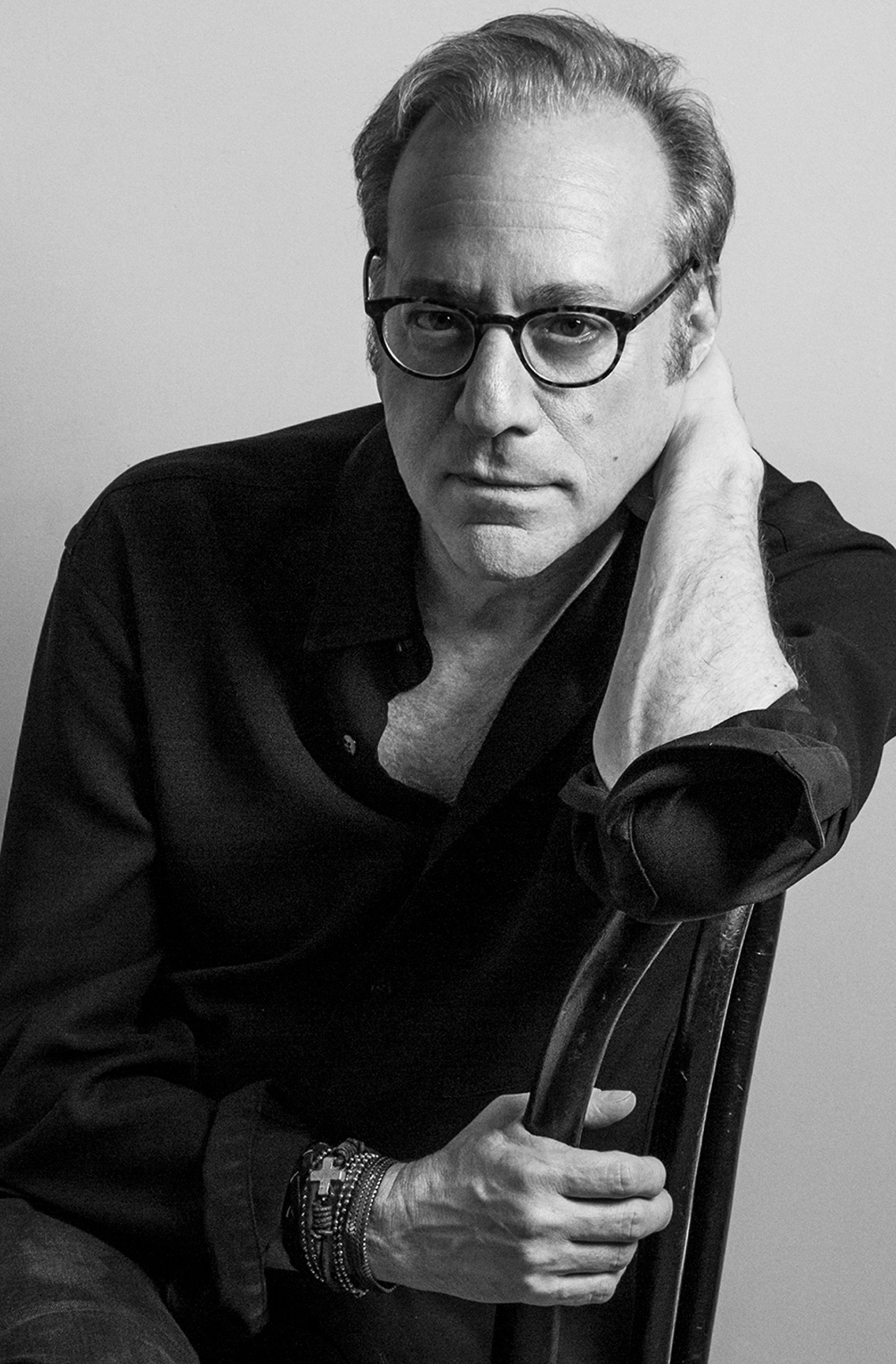Santlofer’s Memoir Chronicles Life After Loss


Best-selling author and artist Jonathan Santlofer — the next guest in the 2018 fall Writers Speak Wednesdays at Stony Brook Southampton — knows all about painful life changes and transitions.
Santlofer is the author of the international bestselling novel, The Death Artist, as well as Color Blind, The Killing Art, The Murder Notebook, and Anatomy of Fear, which won the Nero Award for best crime novel of 2009. He also recently created and edited The New York Times Notable Book, It Occurs To Me that I Am America, a collection of original work by more than 50 of today’s best known authors and artists. He is editor/contributor of The New York Times best-selling serial novel Inherit the Dead, editor and contributor of LA NOIRE: The Collected Stories and Akashic Books’ The Marijuana Chronicles, and co-editor, contributor, and illustrator of the short story anthology, The Dark End of the Street.
His stories also appear in numerous collections and magazines, but his most recent work, the critically acclaimed memoir The Widower’s Notebook, is much more personal: his personal voyage after the sudden and unexpected loss of his wife, Joy, following a routine surgical procedure.
The Independent caught up with Santlofer for an interview.
In Japanese Buddhism there is a saying, “hendoku iyaku” — changing poison into medicine. You seem to be someone who can take a tragedy and turn it into something valuable. You were pursuing a successful career as an artist when a fire destroyed much of your work. It was then you decided to write your first crime novel. What were your first thoughts? And how did it lead you to write a book about crime in the art world?
That’s a terrific quote and I’d like to think it’s true of me, but I have never consciously thought about turning tragedy into something valuable. I think it’s simply that I have some sort of resilience in my personality or DNA. A friend of mine describes me as one of those inflatable clowns you can knock down but it keeps bouncing back. The fact is that I take things very hard, but I’m fortunate to have been an artist most of my life, and so I have a place to work out my demons.
When I lost 10 years of artwork in that gallery fire — most of it borrowed back from collectors and museums, along with a half dozen of my latest paintings — I was essentially left with nothing, and it was pretty devastating. The fire occurred at what I would say was the high point of my art career; I was supporting myself with my art, getting reviewed regularly, and was known in the art world. After the fire, I went to the American Academy in Rome and couldn’t paint. I did drawings of famous artworks in churches and museums while trying to figure out why I had become an artist in the first place.
I started writing a novel because I needed to fill the time. The book I was writing in Rome was a very serious one. It wasn’t until I came home that it became a crime novel. That book, The Death Artist, about a serial killer in the New York art world, was (I thought) a satire, but People Magazine called it something like the “scariest book of the year.” That was a surprise to me because I thought it was funny.
Continuing in that vein, your latest book takes an extremely painful situation and turns it into something of use to others. What was your process for writing The Widower’s Notebook? It must have been a gut-wrenching experience. And then how has the reaction been, on a personal level? Tell us about the people you’ve touched.
I never intended to write The Widower’s Notebook, nor publish it. For the first two years after my wife’s sudden death, I kept notebooks. I’d literally write down what happened every day; it was a way to chart time and keep sane at a time when I felt out of control and out of my mind. I also made drawings (some of which are in the finished book). The notebooks were just for me, but I asked a few writers I respect to read what I was writing and they encouraged me to keep going.
Joyce Carol Oates, in particular, was my greatest cheerleader. We all know she is an extraordinary writer, but what many people do not know is how generous she is to other writers. She said, “You have to keep going because men do not write these kinds of books!” I still resisted the idea of it as a book, even while I made choices of what to include and edited what I was writing.
Sometimes the thing you least want to do becomes the very thing that touches other people most. I worried until the day it was published. Then I started traveling around the country with the book, meeting people, hearing their stories, their need to tell them; men and women talking of grief and loss and, if not wanting answers, at least acknowledgment that although they may never get over their loss, they will get better.
Messages from strangers flood my website and inbox every day telling me I have written their words, thanking me for having the courage to write them. I tell them it was not courage; it was simply the way I processed my grief. Everywhere I go I see this need to reach out, to connect. It’s got me thinking: is grief the great leveler? Is this what it takes to bring people together? I don’t know. But I’ve been to blue states and red ones, and no one asks me my politics while telling me their story or reacting to mine, only wishing me well, as I do them.
I can say this: when it comes to grief and loss, something we will all experience at some point in our lives, we are all members of the same tribe. I could quote from dozens of emails and letters.
What do you do to nourish your soul?
Writing and making art. There are, of course, other things that nourish my soul: my daughter, in particular, who is smart, funny, and super-talented, and I have several really great friends. I also love film. If I had it to do all over again, I might have gone into film in some way, but I’m not unhappy with my choices or what I’ve done.
Have you spent time on the East End of Long Island? Do you have a place out here?
For several summers my wife, Joy, and I rented a small house in Amagansett. I also have several really good friends on the East End and I visit quite often. I recently spent a month in one friend’s guesthouse doing drawings for a graphic novel I hope to finish one day. I think the East End of Long Island is one of the most beautiful places in the world and I’m always happy when I’m out there.
What are you working on now?
I am working on a historical novel about a true crime that occurred 100 years ago. The crime is based on fact, but I’ve created a fictional contemporary story to work with it. The novel goes back and forth in time between fact and fiction, which I like. I’m also working on a second memoir, but that’s a secret (until now).
Is there anything you would like to add?
The thing I’d like to add is that although The Widower’s Notebook falls into the “grief memoir” genre, so many people have told me there are hilariously funny parts of the book, and that makes me happy. I think tears and laughter are close cousins. I did not set out to write funny bits, but life, even at its worst, even at its most tragic, is often absurd and funny, and I included those things in my book along with the sad parts. I think it’s at least partially why so many people have related to The Widower’s Notebook; that, and the fact that I simply told my story, and that I have “been there.”
Many people, men and women, have written to tell me they have experienced so much of what I experienced and wrote about and it made them feel less alone — and that is very gratifying to hear.
Santlofer will read from and talk about his work on Wednesday, November 7, at 7 PM in Duke Lecture Hall on the ground floor of Chancellors Hall.
Writers Speak Wednesdays programs are free and open to the public. The evenings begin with a brief reception at 6:30 PM, and readings begin at 7 PM, followed by a Q&A and book signing. For more information, call 631-632-5030 or visit www.stonybrook.edu/mfa. On Facebook, visit Writers Speak Wednesdays, or follow on Twitter, @WritersSpeakWed.
bridget@indyeastend.com


